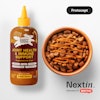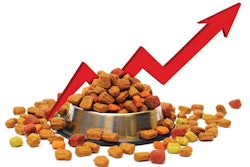
Investment bank Cascadia Capital follows an index of publicly traded pet industry stocks, including Nestlé, J.M Smucker, Chewy and FreshPet. Two of these companies’ stocks finished on par with the S&P500 in 2021, while two underperformed. Nestle and its Purina PetCare division were one of the two that finished favorably in comparison to the overall S&P. Learn about the other three in subsequent articles. Cascadia’s analysts examined the drivers of this growth in “Pet Industry Overview Spring 2022.”
Nestle Purina PetCare performance
Nestlé Purina PetCare added to its five-year compound annual growth rate of 7.5% with organic growth of 12.7% between April 2021 and April 2022, according to Cascadia analysts. Science-based and premium brands, such as Purina Pro Plan, Fancy Feast, and Purina ONE, contributed the most to this growth, as did veterinary products. Sales volume increases contributed 9.4% to growth, while 3.4% was attributable to pricing.
The greatest constraint to that growth was product access to meet consumer demands. Supply chain and logistics difficulties proved to be Purina’s bane in 2021, as for many other companies. Cascadia’s analysts noted that supply constraints contributed to double-digit price increases as a percentage of the manufacturer’s suggested retail price.
Parent company Nestle’s e-commerce sales accounted for 14% of overall sales between April 2021 and April 2022. Third-party online retailers, like Chewy.com, are now Purina PetCare’s second and third largest customers by volume. Purina’s operating profit margin was 21.1%, a 90 bps decline year over year. Cost inflation ate away at profit margins for Purina and other Nestle product categories too.
Considering Purina PetCare’s growth strategy, Cascadia’s analysts observed that of 85 acquisitions by Nestle since 2017, only two publicly announced deals were in the pet space. This reflects a strategy of investing in the growth of existing brands with incremental innovation. China seems to be one area Purina plans to grow those brands. Purina PetCare aims to increase its manufacturing capacity in China with two projects. The company is expanding existing facilities in Tianjin to increase the production of dry, wet and veterinary pet food lines.


















